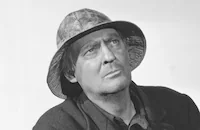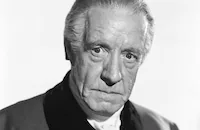Madame X

Brief Synopsis
Cast & Crew
Lionel Barrymore
Lewis Stone
Ruth Chatterton
Raymond Hackett
Holmes Herbert
Eugenie Besserer
Film Details
Technical Specs

Synopsis
Jacqueline leaves her husband for another man, and when she returns to take care of her sick son, her husband flatly rejects her. She leaves without seeing the boy; and beginning her path on the downgrade, she meets and helps a cardsharp named Laroque. When they return to France, her home, Laroque decides that because of her name he can squeeze out a goodly sum from her. At the threat of blackmail, Jacqueline, in a rage, shoots him and is subsequently defended in court by her son, who does not know her true identity. In the final court scene, Jacqueline confesses, without using names, that she shot Laroque so as not to allow her son to discover her degrading life.

Director

Lionel Barrymore
Cast

Lewis Stone

Ruth Chatterton
Raymond Hackett

Holmes Herbert
Eugenie Besserer
John P. Edington
Mitchell Lewis
Ullrich Haupt

Sidney Toler

Richard Carle
Carroll Nye
Claude King
Chappell Dossett
Crew

Videos
Movie Clip



Film Details
Technical Specs

Award Nominations
Best Actress
Best Director
Articles
Madame X (1929)
Barrymore had directed a handful of films in the 1910s but turned away from the profession in 1917 to concentrate on acting. With the advent of sound technology, he recognized new challenges and new potential for the medium, and gladly returned to the director's chair.
Barrymore looked with amusement upon the endless screen tests with which the studios nervously prepared for the sound revolution. "Speech has been a success for thousands of years," he quipped, "and now they are testing it."
Yet Barrymore took the challenge of sound filmmaking very seriously. He astutely advised MGM executives, "Action will remain the chief ingredient of these little cultural dramas of ours... The main difference will be that the titles will from now on be uttered -- preferably in something approximating English -- instead of printed."
His first assignment was a short film, Confession (1929). Satisfied with the technical and artistic results, MGM assigned Barrymore his first talking feature, Madame X (1929). A somber adaptation of Alexandre Bisson's oft-revived play of maternal sacrifice, Madame X follows the downward trajectory of Jacqueline Floriot (Ruth Chatterton), a wife and mother who loses the love of her husband (Lewis Stone) when she has an affair. Returning home to see her sick child, Jacqueline is forbidden entry and cast back into the street. In the ensuing years she remains devoted to her child, whom she barely remembers, even as she sinks into moral depravity. When a con man (Ullrich Haupt) discovers her true identity (and prepares to blackmail her prominent husband), Jacqueline shoots him in the back. Put on trial for murder, she refuses to defend herself or reveal her identity, lest her long-lost son (Raymond Hackett) be humiliated by the revelation. And in a bitter twist of fate, her son, now an aspiring lawyer, has just been assigned to her case.
Receiving its New York debut in 1910, the play Madame X had twice been adapted to the screen before it became Barrymore's property, and would be remade another two times afterward (with Gladys George in 1937 and Lana Turner in 1966). By 1929 it had already come to emblematize the maternal melodrama, in which devoted mothers sacrifice money and respectability so that their children can live their lives free of the taints of poverty or scandal. This "fallen woman" formula would become a genre of its own in the 1930s. The Sin of Madelon Claudet (1931), Blonde Venus (1932), Stella Dallas (1937) and Kitty Foyle (1940) all owe a dramatic debt to Bisson's original play and Barrymore's 1929 adaptation. Incidentally, Dickie Moore, who plays the object of maternal affection in Blonde Venus can be glimpsed in the puppet show sequence of Madame X.
Barrymore consciously avoided the song-and-dance formula that dominated early sound pictures, treating Madame X as a somber and important dramatic play -- without music. To emphasize the film's credentials as a serious drama and avoid any music hall associations, MGM premiered the film in New York's Sam H. Harris Theater, a legitimate stage venue that was rented for the occasion.
Even in the midst of the film, Barrymore savored silent pauses rather than filling every screen second with Movietone gab. Some critics, frazzled by the unceasing noise of the typical talkie, were grateful. "Mr. Barrymore is to be congratulated for his intelligence and restraint in having nothing said or heard when there is no need of it in furthering the progress of the story," wrote Motion Picture Magazine.
Although pleased to be able to work with the new dimension of sound, Barrymore was frustrated by the technology's lack of mobility. Rather than group actors underneath an overhead microphone (or gather them around a flowerpot or telephone with the recording apparatus concealed within), he wanted to allow them freedom to walk around the sets without falling out of microphone range. To remedy the situation, he called for a prop man to fetch a fishing pole, and suspended the microphone from one end of the pole. The microphone could then follow the actors instead of vice-versa, and the "boom microphone" was born. Unfortunately for Barrymore, other filmmakers, including Cecil B. DeMille and W.S. Van Dyke, also claim to have invented the mobile microphone at the same time, so the question of its true innovator remains unresolved.
Viewers may notice that no music is heard under the opening or closing credits of Madame X (even though Leo's growl is audible). This is the result of a short-lived practice in which studios expected the local theatre musicians to provide live accompaniment to the opening credits of sound films. Because keyboardists and orchestras were still working in the theatres at that time (providing music for silent films still in distribution), it was an easy way to make the screening more of a special event and not a purely "canned" presentation. At times during the film's production, the sobriety of Madame X and its lack of music were more than Barrymore could bear. He reportedly visited the set of Broadway Melody during breaks in the shooting. When asked the purpose of his visit, Barrymore replied, "Watching the pretty girls. Over on my set I'm directing Ruth Chatterton in Madame X -- only heavy drama... Every director needs a change of pace."
Barrymore was not the only one to question Madame X's dramatic weight. Freshly recruited from the Algonquin Round Table, Dorothy Parker did some uncredited dialogue work on the film and was disappointed in its sobriety, in the age of flappers, red hot rhythm and Al Jolson's The Jazz Singer (1927). "Why not jazz up the story?" She asked Barrymore, tongue-in-cheek, "Stick in a few hot numbers and call it Mammy X!"
Barrymore resisted the temptation and was rewarded with an Academy Award nomination for Best Director. Ruth Chatterton was nominated for Best Actress. In its review, Variety praised the film for ignoring the musical urge and for daring to present a grim and controversial tale without glamorization. "Pictures of this caliber and their makers are entitled to untold commendation...in lending to the screen a quality that the screen needs. Pictures like Madame X confound the reformers, elevate the name of pictures and tell the world that there is an art in film making."
Chatterton's performance is remarkable even by today's standards, as she degenerates from a society woman to an absinthe-swilling, bloated wretch, almost unrecognizable as the same actress. Variety also lauded her work, with one minor reservation: "During the picture's running, Miss Chatterton in her character is twice knocked down, each time by a different brute. And each time she 'takes the slap,' as it is called in stage parlance, warding off the blow by her open hand at the point it is struck. In this film the slaps are taken so obviously by her they will bring a smile. To the lays [laypersons] they are invisible."
Director: Lionel Barrymore
Screenplay: Willard Mack, Based on the play by Alexandre Bisson
Cinematography: Arthur Reed
Production Design: Cedric Gibbons
Cast: Ruth Chatterton (Jacqueline Floriot), Lewis Stone (Louis Floriot), Raymond Hackett (Raymond Floriot), Ullric Haupt (Laroque), Sidney Toler (Dr. Merivel).
BW-95m.

Madame X (1929)
Quotes
Trivia
Notes
Remake of Madame X, 1920. In 1930, Metro-Goldwyn-Mayer produced a Spanish-language version-see record for La mujer X.














